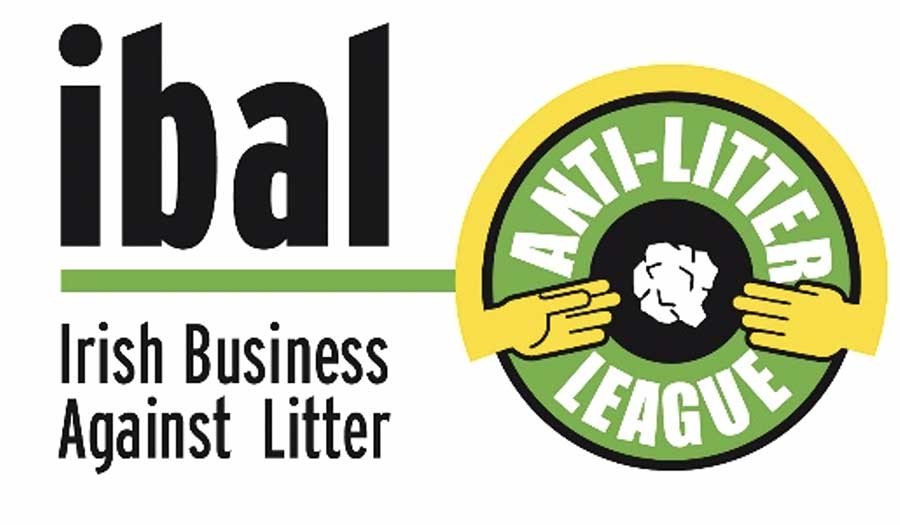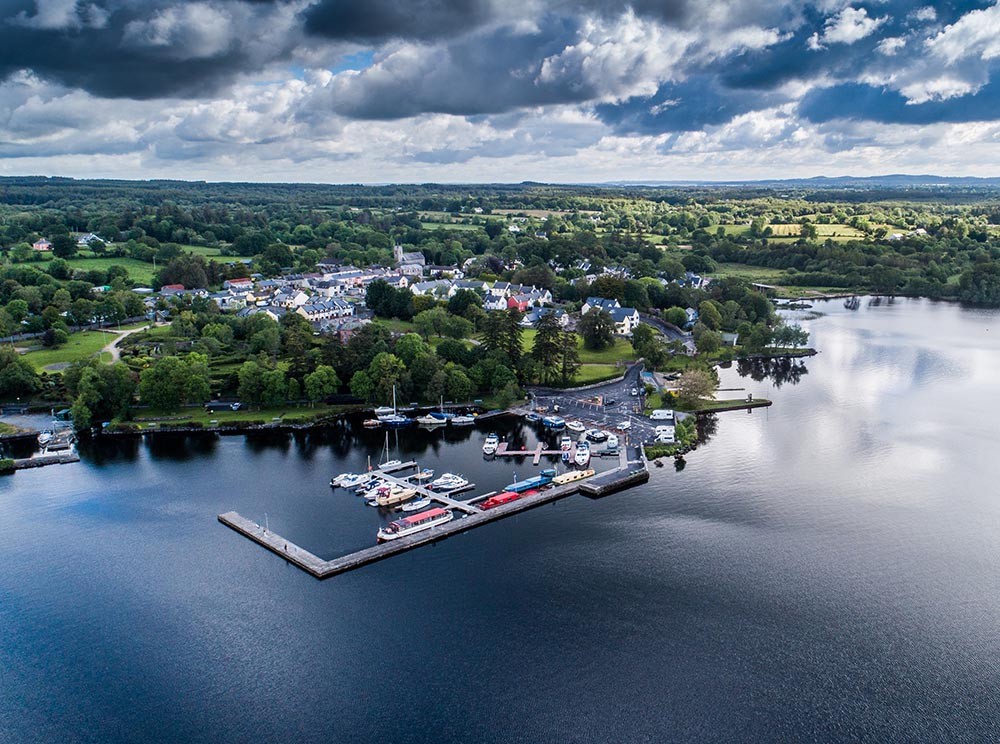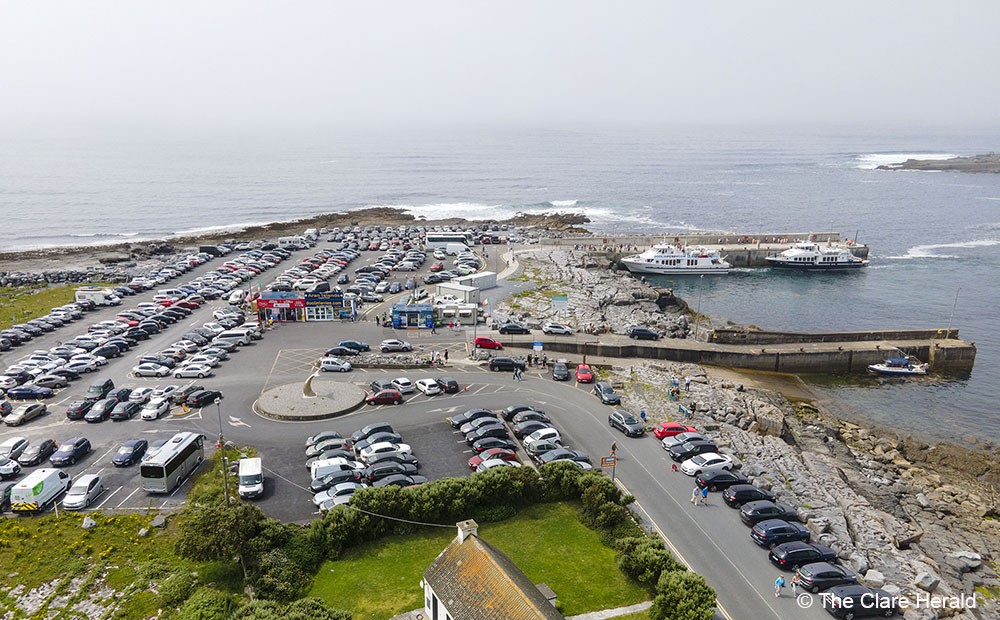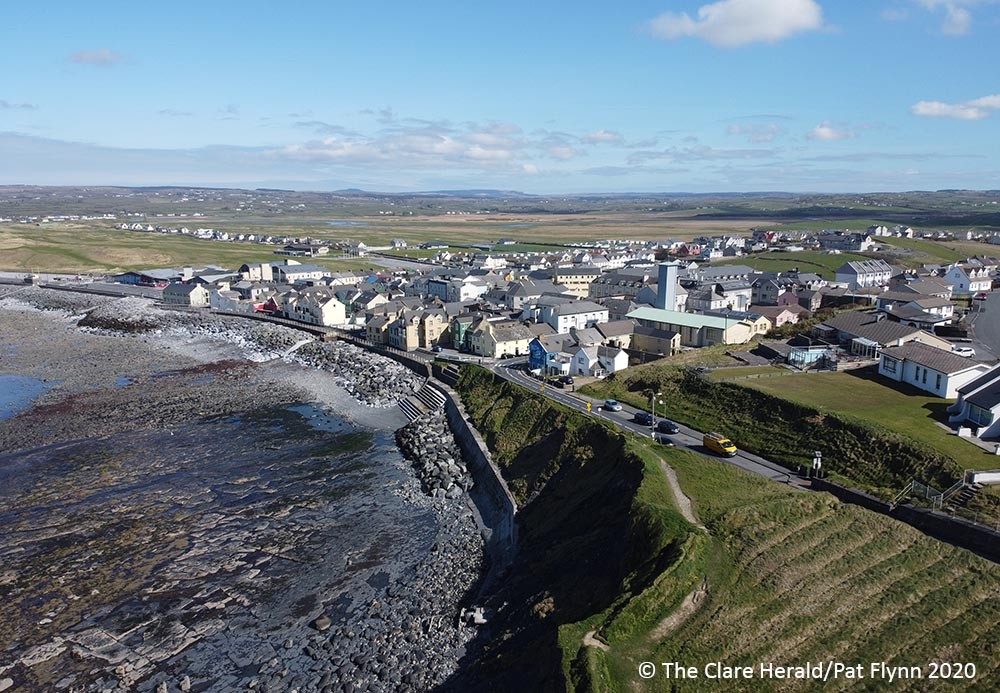
While the majority of our beaches and waterways are falling short of clean status, Lahinch and Mountshannon in Clare are ‘Clean to European norms’.
That’s according to a nationwide litter survey by business group Irish Business Against Litter (IBAL), which found Doolin pier once again to be moderately littered. 40% of 32 areas surveyed were clean, but there was a rise in areas branded ‘littered’ or ‘heavily littered’.
Beaches, harbours, rivers and their immediate environs were monitored by the Environmental Education Unit of An Taisce in June and July. The An Taisce report for Lahinch stated:
“Fresh and welcoming signage welcomes visitors to the seaside resort of Lahinch. The promenade was excellent with regard to litter and there was a virtual absence along the beach area – this is particularly good considering the high number of users availing of the facilities. There was a mix of older style bins, along with newer ‘solar belly’ bins and a recycle facility – the latter was well maintained. Any minimal amounts of visible litter were food related and short-lie. It is great to see the big efforts being made by the council having such a positive impact.

The report for Mountshannon stated: “A very freshly presented and well-maintained environment, with a virtual absence of litter throughout. An area cordoned off by fencing didn’t impact in any negative way on the litter situation. Visitor information notices and dog fouling / anti litter notices were in good order, fresh, clear and legible. Picnic table was a nice feature and seating / benches looked well. Recycle facility was in very good order. There was a very large sign beside the recycle bins ‘Please do not Leave any Items on the Ground – This Site is Currently being monitored by Clare County Council’ – perhaps this signage is having the desired effect?”
The report for Doolin pier and harbour stated: “Doolin is a freshly presented environment which has seen big improvements in litter levels compared to a few years ago. This time around it was a moderately littered site, mostly short-lie, mainly found outside the pier car park on the road to the overflow car park. The car park surface, signage, visitor information notices and dog fouling facility were well presented.
Cigarette butts were particularly prevalent, with lower levels of a variety of food-related items (most notably fast food wrappers and sachets of ketchup / vinegar) . Red and white plastic industrial tape was tied around a pole and flapping about, creating a poor impression. The most obvious blot on the landscape was the building-related materials in the car park and long-lie pieces trapped in the rocks – levels of which were quite significant.”

Other clean beaches included Brittas Bay, Curracloe, Lahinch, Clogherhead, Portmarnock and Strandhill. By contrast, Bundoran, Keel in Mayo and Salthill and Dogs Bay in Galway were littered.
“The story is a positive one in that we’ve seen a welcome rise in the number of clean beaches and harbours compared to our study of 2 years ago,” comments Conor Horgan of IBAL. “This is especially encouraging given the number of people who are staycationing and availing of our coastal amenities this year. There is evidence that many local authorities have upped their game in terms of additional bins, facilities and signage.”
“However, at the bottom end of the table, we’ve seen many areas deteriorate from ‘moderately littered’ to ‘littered’.
“As well as local authorities, credit is due to growing number of Clean Coast volunteer groups, now 1,500-strong, who work so hard to keep our beaches free of litter. Their efforts are clearly bearing fruit,” adds Mr Horgan.
The most common forms of litter found by the assessors were cigarette butts, sweet wrappers, disposable masks and plastic bottles, with coffee cups also featuring strongly. Alcohol cans were found in almost half of all sites.
“The majority of these litter item are plastics, whose impact on the marine environment is a recognised source of global concern. Cigarette butts, for example, may appear harmless, but they are in effect a single-use plastic which poses a real danger to our sea life.” Research shows a single butt can contaminate up to 200 litres of water.
“We all need to realise that the implications of litter along our coasts go beyond tourism and recreation. It presents an existential threat to our planet.”

